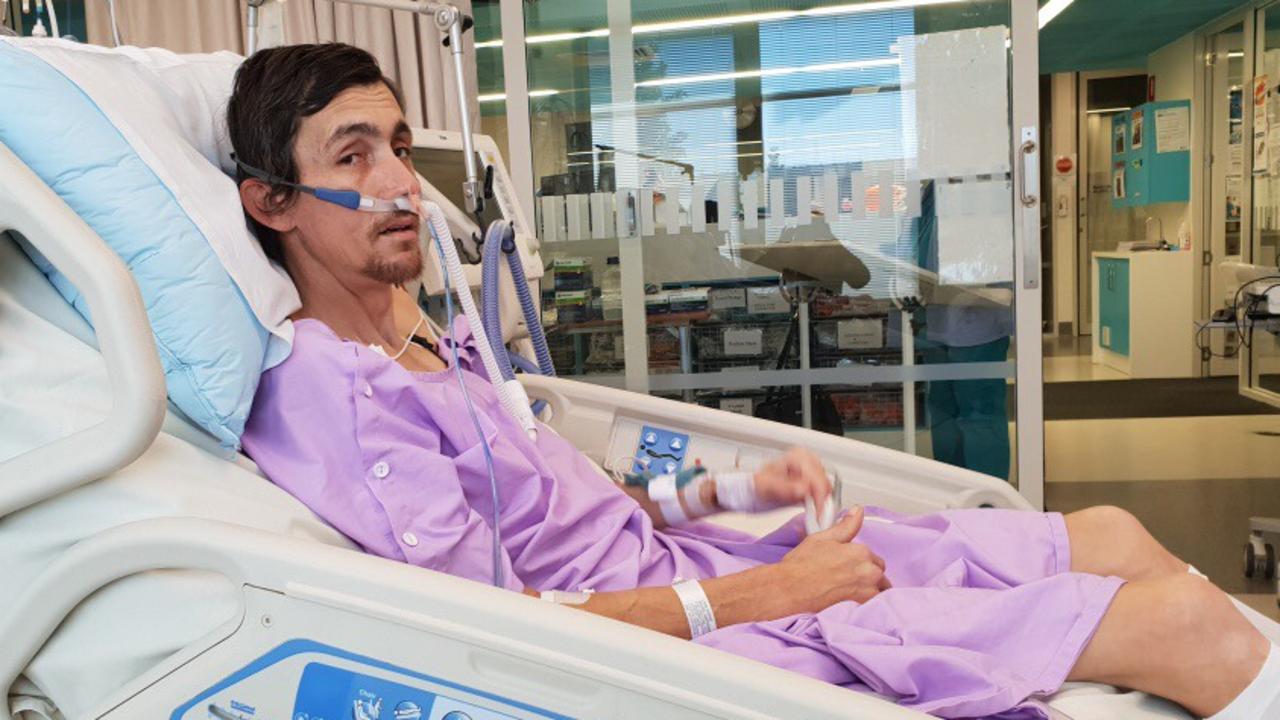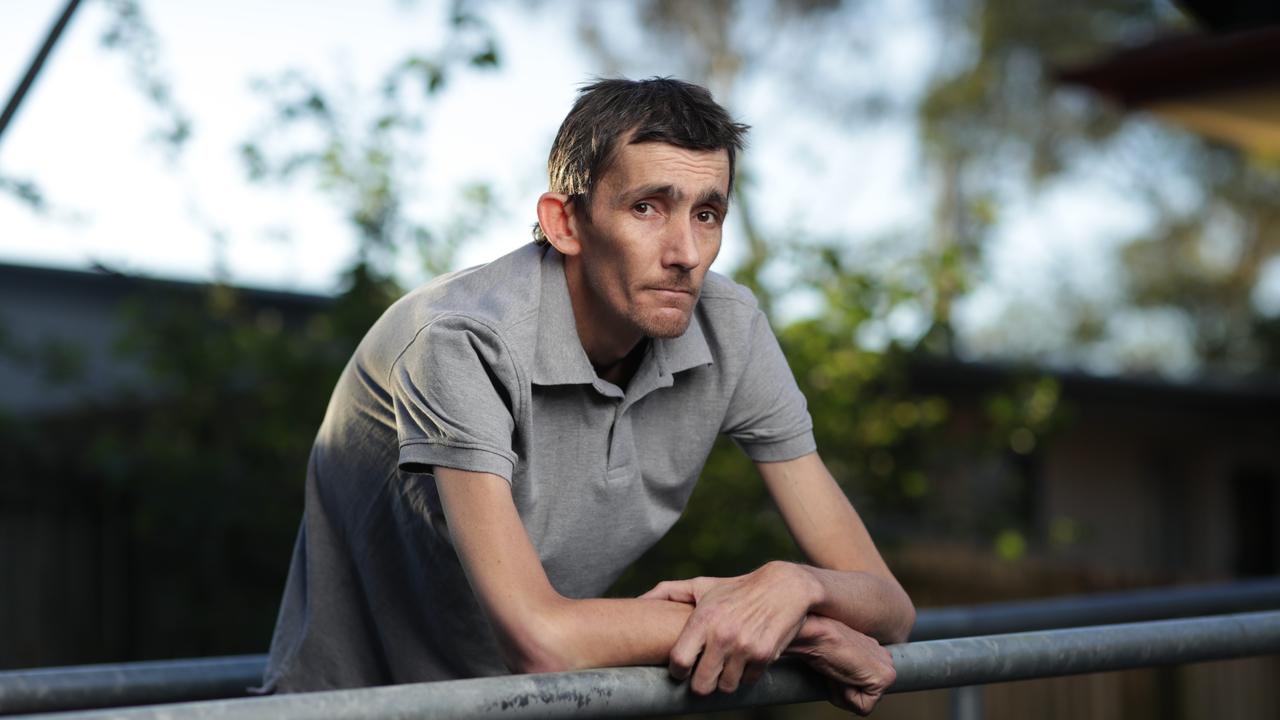Engineered stone: The ‘new asbestos’ killing Aussie tradies
A type of kitchen countertop is being called the “new asbestos” despite being used in renovations across the country, with 275,000 tradies at risk.
A common building material is being likened to the “new asbestos” despite being used in kitchens across the country, putting more than 275,000 Aussie tradies at risk of cancer and lung disease.
Engineered stone countertops, which are riddled with deadly silica, are causing silicosis — an incurable work-related lung disease.
More than 70 cases are before Australian courts. Workers, many on oxygen tanks or needing lung transplants, insist they were never warned about how dangerous the material they worked with could be.
Have a similar story? Get in touch — chloe.whelan@news.com.au

Engineered stone, commonly used in countertops as a cheaper alternative to marble and granite, poses no risk to those living in the house after it’s installed.
To be safe in the workplace, though, it must be cut while wet, by workers wearing full protective gear.
That is, unfortunately, not how many stonemasons work — particularly not before 2018, when the effects of silica were known but the first Australian silicosis suffer had not yet come forward.
Engineered stone contains up to 95 per cent crystalline silica, the dust of which is highly toxic. When inhaled in large quantities, it can cause a host of deadly illnesses, including silicosis, auto-immune diseases, lung cancer, kidney disease and pulmonary infections.
Marble, by contrast, contains just two per cent silica. Granite contains between 10 and 50 per cent.

A quarter of a million tradies exposed
A study from Curtin University estimated more than 275,000 workers, mostly tradies, were exposed to high levels of the carcinogenic dust. Up to 103,000 of them would be diagnosed with silicosis, the study predicted.
Silicosis is the oldest occupational lung disease on record, and its case numbers are only rising. An explosion of cases in the past 20 years coincides with the introduction of engineered stone into the Australian market, as well as a record-breaking number of new government-led building projects.
More than 70 silicosis-related court cases have been filed in Victoria and Queensland, and several more in other states.
Many are from stonemasons suing their employers for failing to provide a safe working environment. Some are also going after the product’s manufacturers, including industry titan Caesarstone.
One of those stonemasons was father-of-two Ken Parker, who was diagnosed with silicosis in 2019 and given a life expectancy of between five and 10 years.

Mr Parker, who spent 18 years working in a factory in Sydney’s west, told Nine newspapers he was never warned about the dangers of the product.
“I used to tell people it was like working in hell,” he said.
“You can’t see more than a couple of feet in front of you for the dust. It’s in your clothes, in your skin, in your eyes, car, you take it home with you. It’s just everywhere.”
Mr Parker, who reached a confidential settlement in his case, insists that until the 2018 whistleblower spoke up, industry leaders claimed engineered stone was safer.
Caesarstone’s latest annual report showed that, in December 2021, the industry giant was involved in 37 lawsuits relating to silicosis claims in Australia.
Since September 2002, the company’s Australian liability insurer ceased covering newly diagnosed silicosis-related claims. Caesarstone Australia now pays its legal settlements from its revenue.
Caesarstone insists the problem is not with their product, but rather with poor handling of it.
It had included warning labels about the risks of silicosis in its safety data sheets since the 1990s, followed by warning labels on the slabs in 2010 and a “comprehensive master of stone” online learning platform in 2020, the company said.
“Engineered stone is entirely safe to consumers in its installed form and silica only presents a risk to workers if stone is handled incorrectly,” Caesarstone said in a statement.
“The biggest problem historically has been fabricators’ compliance with regulations and enforcement of those regulations. That’s the role of employers and work safety regulators.”
An alleged cover-up
Many of the manufacturers and handlers of engineered stone are accused, according to a joint 60 Minutes, The Age and Sydney Morning Herald investigation, of an alleged cover-up.
Spanish Caesarstone competitor Cosentino was earlier this month found guilty of negligence in a Spanish court. The manufacturer’s owner accepted a six-month suspended prison sentence, Reuters reported, after admitting to covering up the dangers of the product.
In Australia, a 36-year-old Queensland stonemason who had previously spoken out about silicosis died in 2019, prompting federal government action.
Within weeks of Anthony White’s death, the government had launched a national dust disease task force tasked with developing an approach to managing dust diseases including silicosis.

Some reforms have been introduced, but four years later, there still isn’t a national register, nor a requirement to monitor the air in workplaces that use engineered stone.
Instead, SafeWork NSW issues “improvement notices” when silica dust is found on toilets, in lunch rooms or on office benches, or if workers are found without proper protective equipment or training. The notices allow workplaces to address the problem within a time frame and without closing down.

SafeWork NSW said it had visited some 2100 silica-focused workplaces, and issued 1300 of these notices. About 900 of them were silica-related.
Images of engineered stone factories obtained by Channel 9 showed workplaces covered in layers of silica, like a toxic blanket of snow.
Have a similar story? Get in touch — chloe.whelan@news.com.au






